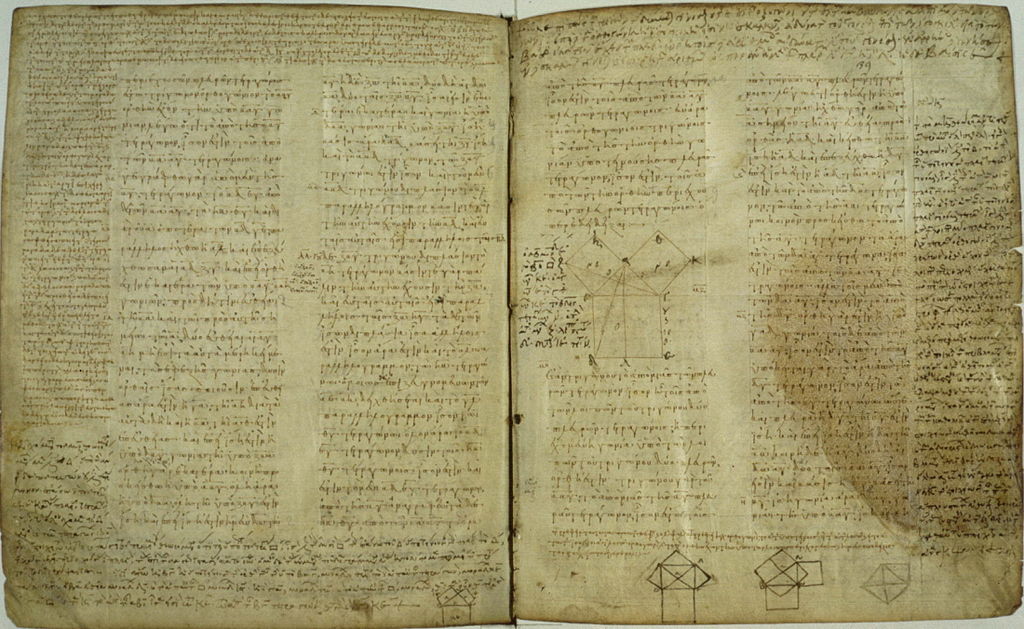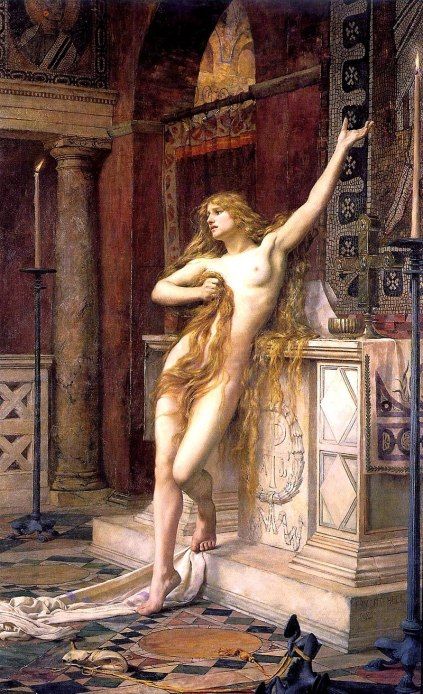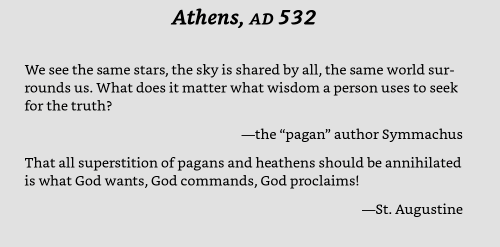Battle Against Ayurveda is a Fight for Our Survival
The Case against Patanjali by Indian Medical Association and the tone of Judiciary is alarming. We need to look into its historical and global context to fully grasp its ramification.

Hypatia – the great philosopher, astronomer and mathematician of her time, has been depicted by the Christian writers in erotic ways. Reverend Charles Kingsley, for example, talked about her curved lips and beauty of her “every line”.
This, when Hypatia was rather austere and removed from the pleasures of heart and sex. In fact, when one of her students fell passionately in love with her, she carried her sanitary napkin and placed it in front of him saying
“You love this, young man, and there is nothing beautiful about it.”
Needless to say the young man’s infatuation did not last very long after that!
Alexandria was the hub of intellectuals and the scholarly (apart from Taxila and Nalanda in the East). By 1st century BC, they say that the library had 700,000 volumes. Another estimate says there were 500,000 scrolls by the 3rd century BC. And, an entire cataloging system was invented to track those volumes.
This, Alexandria, was the place where scholars, seekers and scientists were held in great esteem. Actually, revered! The Academicians were given stipend, free meals, place to live and museums and the greatest library.
Alexandria witnessed some of the greatest minds to ever walk the planet. Archimedes, Euclid, Eratosthenes (calculated the circumference of Earth), Aristarchus (heliocentric model of Solar system), Hipparchus (astronomer), and Calimachus (poet) to name a few.
Hypatia’s father, Theon of Alexandria, was a remarkable mathematician himself and had studied and worked in Alexandria. It is said that his commentaries and works on Euclid were so authoritative, that whatever we read on Euclid, the mathematician, today, is perhaps from the mind of Hypatia’s father.

Hypatia was a pure scholar whose only interest was in mathematics and despite the extremist Christianity rising in the town, she remained strongly just and fair to Christians and non-Christians alike. She would entertain every seeker of knowledge.
The time was 415 AD, when after the fanatic Theophilus’ time as Bishop, an even more fanatic and brutal Christian Bishop came to town. His name was Cyril, Theophilus’ nephew. Soon, his monks who were ready to fight for their Bishop to finish the heathen gods descended from nearby mountains.
Alexandria’s Governor was a moderate Christian named Orestes. He was a good friend of Hypatia and was not happy with Cyril who was spying on both.
As Orestes rode through Alexandria one day, in his carriage, Cyril’s Christian monks decided to attack him. First they ‘insulted’ him by calling him “pagan idolater”, to which he objected saying that he was a baptized Christian. But the fanatic mob had made up its mind. And they hit his head with a rock and he lay in blood. Somehow he escaped with the help of the locals.
Realizing that killing a moderate Christian was not going to be easy, Cyril wanted to target Hypatia instead.
And so, Cyril’s men started rumors that the reason for enmity between Orestes and Cyril was Hypatia. She was using her ‘influence’ on Orestes – which to the illiterate monks from the hills translated into sexuality or “work of the Devil”. And, per them, she was the harbinger of hell. She was a witch who had cast a spell on the city to go against “the God”.
IN March of 415, on one of her rides through the city, she was blocked by the believers and as she stepped off her carriage, carnage started. Under the guidance of the Church magistrate, Peter, she was first dragged through the streets to the Church.
In the Church, her clothes were ripped off and with the broken pottery pieces, they cut open and flayed her skin. All this happened while she was still breathing.
And then while alive, her eyes were gouged and as she lay dead finally, her body was torn into pieces.

“Whatever was left of her” was then thrown in to a pyre to be burned. (from the book “The Darkening Age: The Christian Destruction of the Classical World“)
Theologian Phillip Schaf describes the whole episode of her death thus.
‘This lady, a teacher of the Neo-Platonic philosophy in Alexandria, distinguished for her beauty, her intelligence, her learning, and her virtue, and esteemed both by Christians and by heathens, was seized in the open street by the Christian populace and fanatical monks, perhaps not without the connivance of the violent bishop Cyril, thrust out from her carriage, dragged to the cathedral, completely stripped, barbarously murdered with shells before the altar, and then torn to pieces and burnt. (Phillip Schaff, History of the Christian Church, Volume 3: Nicene and Post-Nicene Christianity, A.D.311-600, Grand Rapids, MI: Christian Classics Ethereal Library, 1819-1893, p. 50)
That was how believers announced the most important conquest of the “Christian triumph” of the “old world” – by tearing – literally – apart a hapless woman. And, not just any woman – but perhaps the greatest mathematician of her time in that part of the world!
Throughout the time when the Greek and ‘pagan’ scholarly schools, libraries, temples and cities were being ravaged, the pagans kept emphasizing on the pluralism of ways to approach the divine. Something that is so close to what was always said in Indian traditions. (Read – How Christianity destroyed the Greek way of life and lessons for India)
एकम् सत् विप्रा बहुधा वदन्ति
ekam sat vipraa bahudhaa vadanti
Meaning: The truth is one, but the sages (or learned ones) call it by many names or describe him in many ways
Meanwhile, the creed of the believers was very clear. There was no space for many gods. Only One god – the “true God” – was the truth for them. Anything else was cause for hell-fire. Even when the Greeks kept suggesting that Jesus could be accommodated as another god amongst the many that the traditions already accepted. That was not enough. Because for Exclusivists, belief or utterance of anything other than the Christian God was enough cause for destruction.

What “good” and reconciling Pagans were doing was – in their secular pluralistic ideals – to put their Pluralism on the same altar as Exclusivism, whose firm, unshakable, and sole belief was that Pluralism was Devil incarnate. The reason for hell-fire.
When pluralism, and acceptance of everyone’s way, is translated into Devilry as an unshakable faith and belief coupled with muscle of the masses and mobs, only the Fanatic wins.
There is no equality between the Exclusivist and the Pluralist. Hypatia learnt that March day in 415 as the believers tore one body part of hers after another.

Donate for Drishtikone
We spend from our personal savings to keep Drishtikone up and running while adding thoughtful and analytical content. If you like what you read, please share it with your friends.Also please donate towards the cost of this Online Magazine.
$15.00
Featured Image is an illustration by text of Illustration by Louis Figuier showing how Hypatia may have been dragged through the streets of Alexandria.
Every Sunday AM (US Time)/ PM (India time), we send out a weekly detailed newsletter. We also share other insightful notes during the week. Its free. Do sign up and share with friends!